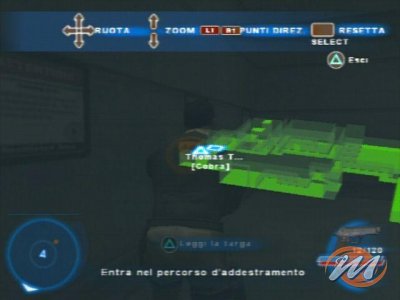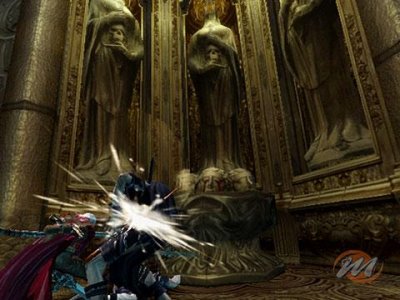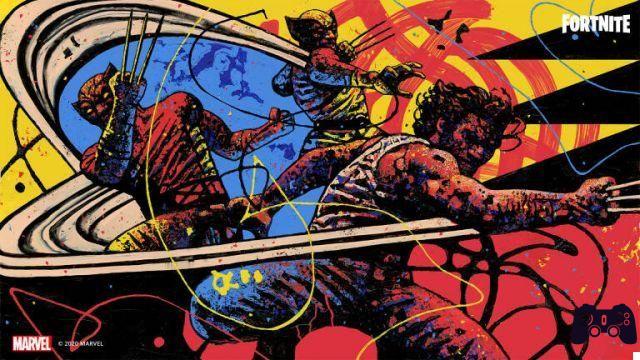Welcome back to Episode 15 of our in-depth guide to Super Smash Bros. Ultimate's stellar cast of playable characters
In this ours guide, we will devote ourselves to the many characters playable of Super Smash Bros. Ultimate, starting with Mario up to the latest additions of the second Fighters Pass. In each episode we will describe about five or six fighters, however, dividing them according to the chapter of Smash in which they made their debut. Here we are: it's time to see the first fighters DLC, namely sold separately. Of course, we will not fail to tell you theirs too price. Today we will see the Piranha plant, Joker,Hero, Banjo and Kazooie, and finally Terry. In the appendix, we will talk more about the latter and the complex commands it carries with it.
Quick Preamble
Before moving on to the characters, let's clarify the fulcrum of the guide: in Super Smash Bros. Ultimate the task of each player is to throw opponents off the screen, fighting in arenas that mix the genre of fighting with elements of platformer (X and Y allow you to jump). The A and B keys, used in combination with the various directions, give life to the most disparate moves, as well as the back keys to manage shields, dodges and holds. The game also implements tools that irremediably alter the fate of each encounter, but in this guide we will basically focus only and only on the characters themselves. Increasing the opponent's damage will make him lighter and, therefore, vulnerable.
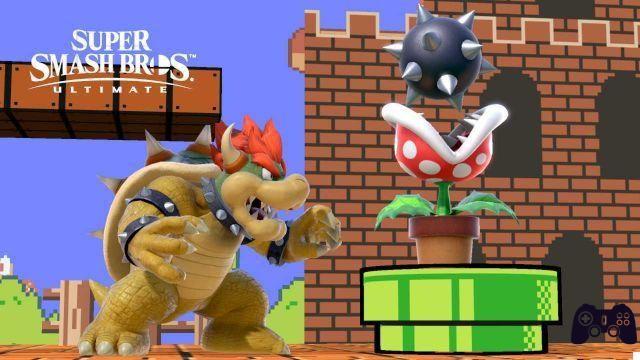
Piranha Plant - Super Smash Bros. Ultimate Character Guide
As happened in the fourth Smash with the two Wii Fit Trainers, also in Ultimate Masahiro Sakurai wanted to throw a curveball. Announced as a free bonus for early players, the Piranha plant debuts as one of the most unexpected fighters in the history of the series. Among the firsts implied by this incredible novelty, we remember that this is the first DLC coming from the series Mario, the first common enemy made playable in Smash, the first version of any type of Piranha Plant to be usable in a game, and the first Piranha Plant to boast any kind of mobility.
- Availability: The period to redeem the Piranha Plant for free is long over. Now the character can only be purchased for five euro. It doesn't fit into either Fighters Pass, so it's obtainable only separately.
- Franchise of origin: Super Mario
- Origins: As the easter egg of the Temple of Palutena arena reminds us when the Piranha Plant is in the field, it would be easier to list the Mario titles in which this enemy is hiding. Piranha Plants first appeared in the first Super Mario Bros. (1985), and his ever since infinite variations they have appeared in almost every chapter of the regular series. This is such an iconic enemy that even the carnivorous plants of the first two Crash Bandicoots are unofficially referred to as "piranha plants". No doubt about it, the weed never really dies!
- Gameplay: In the right hands, the Piranha Plant can be a heinous character for opponents. Imagine the amount of tricks up King K. Rool's sleeve, just enclosed in a smaller (and more biting) body. Acuminate ball (B) is perhaps his… flagship, if you will. By holding B you can spin the spiked sphere (image), and then launch it with a side input (↔). It does a considerable amount of damage, and its throwing power proves to be devastating to keep anyone trying to re-enter the arena out of the arena. Poisonous breath (↔ + B) allows you to charge the move by holding B, then release a short-range toxic cloud that traps similarly to Ness's PsychoFire, Daraen's Firefire, and Simon and Richter's Holy Water. piranhacotero (↑ + B) is based on the same principle as King K. Rool's Propeller Pack, with the addition of being more similar to Fire Fox, Fire Hawk and Fire Wolf. Lungostelo (↓ + B), finally, is a very particular long-range directional attack. It can be charged (and irreversibly directed) by holding B, but once launched it transfers the entire hitbox (the part of the body "sensitive" to enemy blows) to the head, making the latter vulnerable to possible reprisals. As if that weren't enough, the Piranha Plant boasts a secret counterattack, hitting anyone who touches it from above while it is lowered!
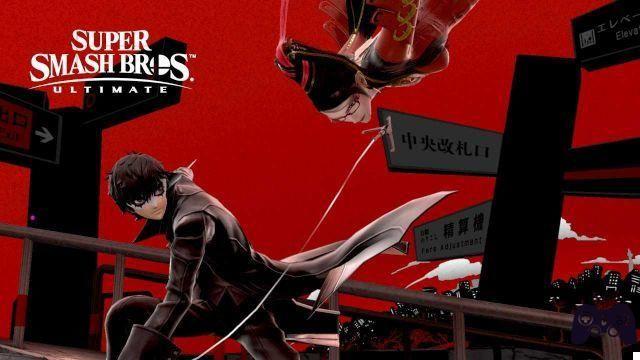
Joker - Super Smash Bros. Ultimate Character Guide
The first of the "real" DLC characters that we will see in our guide to Super Smash Bros. Ultimate is Joker, code name of the protagonist (Ren amamiya, if you prefer) of Persona 5. There is nothing like a character in a game still exclusive to Sony consoles to - quoting the then president of Nintendo of America, Reginald “Reggie” Fils-Aimé - “give a taste of the DLC ".
Masahiro Sakurai had promised that none of the DLC characters would be someone else's Echo and he was up to his word. Similarly to Sheik and Samus Zero Suit, Joker's fighting style - first representative of Atlus on the roster - he's stealthy but a mechanic unique to him allows him to hit really hard.
- Availability: The speech applies to all the DLCs that we will see from now on. Joker, his Spirits and the scenario Mementos (image) are shoppable for six euros. The Fighters Pass, which also includes the Hero, Banjo and Kazooie, Terry and Byleth costs it instead 25 (savings of one euro per fighter).
- Franchise of origin: Persona (spinoff di Shin Megami Tensei)
- Origins: The series Shin Megami Tensei was born on Nintendo consoles as a series of role-playing games with a strong horror vein. Person instead was born on PlayStation with the spinoff Shin Megami Tensei Revelations: Persona, from which the scenario Mementos draws one of its songs. The "advice" item in the Ultimate pink menu (Forziere) vaguely alludes to the incipit of Persona 5, speaking of "an accident". It is not a small "accident", actually: Joker begins by foiling a real one rape. Unfortunately, man's ties in the world of politics (social criticism is a staple of the series) see Joker ending up in probation. Discovering the existence of a parallel world born from the consciousness of the community - Mementos, in fact - Joker and other outcasts found the band of Phantom Thieves of Hearts ("Ghost thieves of hearts"). The lively style of the game stems from Atlus's desire to make the game stand out in women's magazines as well. Mission accomplished!
- Gameplay: Joker's first three special attacks are very "standard" if you like. Gun (B) allows you to hold the button down to cause damage as with Fox's Blaster, but with the slowness between shots more similar to Falco's. Eiha (↔ + B) hurls a dark flame forward. Grapple (↑ + B) hits upward, dragging a character down (image) and also allowing you to grab the edges from below (flying hook, next episode). However, it is the rebellion bar the particular mechanics of Joker. By dealing and taking damage, or by cashing it with Guard of the rebel (↓ + B), the character fills the bar thus summoning Arsenic (the Joker persona). All attacks change to Special gun (B), which does more damage, Eigaon (↔ + B) which generates an explosion on the ground similar to Lucas' PsychoFire, Wings of rebellion (↑ + B) which allows a momentum similar to (but less directional than) the Gift of Flight of Pit and Dark Pit, and finally the physical counterattack Tetrakarn (↓ + B) which changes in the reflector makarakarn with ranged attacks (similar to Palutena). Taking damage, it emptying of the rebellion bar accelerates considerably.
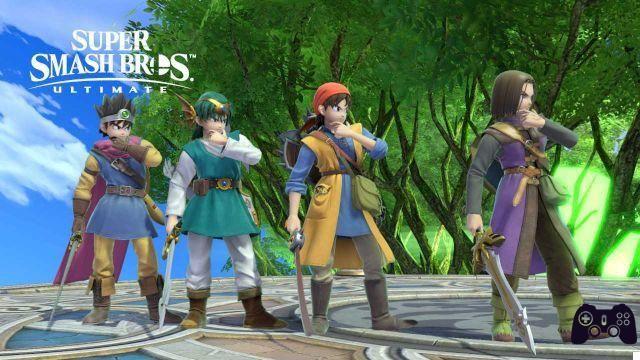
Hero - Super Smash Bros. Ultimate Character Guide
Simply called Hero, the protagonist of Dragon Quest XI: Echoes of a lost era (canonically, “the shining"; right in the image) arrives in Smash bringing with it the traditional RPG mechanics we mentioned when talking about Cloud. His alternative costumes (image) recall Erdrick from Dragon Quest III: And so he entered the legend ... (first from left), Only from Dragon Quest IV: The Chronicles of the Chosen (second) ed Eight from Dragon Quest VIII: Odyssey of the Cursed King (third).
The second representative of Square-Enix, one of the most requested fighters ever in Japan, has allowed Sakurai to break two internal regulations of the software house: the ban on letting the protagonists of Dragon Quest, and to see them take on the stars of Final Fantasy. This speaks volumes about the respect Sakurai has earned!
- Availability: The Hero is available with the scenario Altar of Ygdrasil (image) for six euros. When purchased in bulk in the Fighters Pass which also contains Joker, Banjo and Kazooie, Terry and Byleth, the total cost of 25 € allows you to save one euro for each fighter.
- Franchise of origin: Dragon Quest
- Origins: It is four characters, so we'll have to go fast! The shining he is a mountain boy who discovers he is destined for something big when the truth about the branding he wears on his hand emerges. Erdrick is the best known Dragon Quest hero, and is the son of the hero Ortega. Although Dragon Quest III (or "Dragon Warrior III" in America) boasts a system divided into interchangeable classes, Erdrick could not alter his own. Only he lived a quiet life practicing fencing with his childhood friend before being called into action in the fifth act of the game. In the end, Eight we know him best as the face of the chapter released on PS2, which in the west has enjoyed the inclusion of a demo of Final Fantasy XII. A member of the royal guard of Trodain, Eight is the only survivor of the curse that has struck the kingdom. His little mouse, Munchie, was faithfully reproduced in his costume, including animations.
- Gameplay: All the Hero's special attacks require magic points that appear in the blue bar above the dammeter. Flame (B) requires two button presses: one to load (resulting in the more powerful and expensive versions, Flame ball e Megafiamma), and one to launch the attack. lightning (↔ + B) is based on the same principle, but in his case it's a matter of holding B and then releasing it. The strongest variants are superfulmine e Magnetic storm, but in the case of the latter the attack hits almost only at close range. Wind (↑ + B) can become Storm e Tornado: the latter boasts extraordinary recovery potential (as well as allowing you to attack opponents below), but charging it while holding B is useless if the magic points are low. Choice of action (↓ + B, image) calls up a command selection menu right above the dammeter, and the available moves are always four, but randomly chosen on a total of 21. We summarize the most important: Suicide bomber sacrifice a life to deal massive damage at close range, Magical explosion sacrifice all remaining magic points to unleash a wide-ranging (non-sacrificial) explosion, Teleport consists of an upward shot that brings the character back to a random point in the arena, Hugs boasts random effects, Instant death is a bullet with an instant KO potential, More in one fell swoop generates a close-range explosion that can have the same effect on multiple opponents and Acceleration blends Shulk's Leap and Haste styles. It can happen too Healing, to lower your damage percentage. Reflected mirrorfinally, it acts as an automatic reflector, like the Franklin Medal tool. The magic points recharge dealing and taking damage. Smash attacks have a random chance to launch critical hits (marked with a blue zoom) that deal more damage and throw farther. Concentration, versatile resource management and luck are the keys to making good use of the Hero.
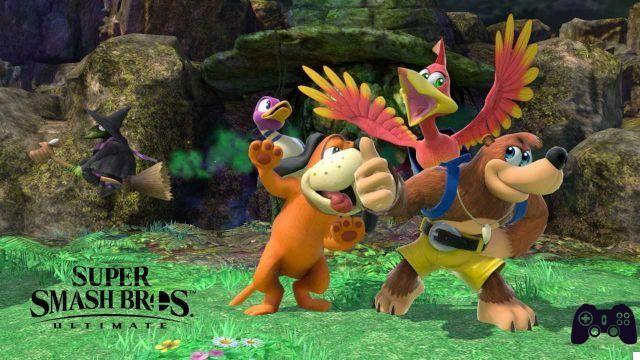
Banjo and Kazooie - Super Smash Bros. Ultimate Character Guide
Just as at the beginning of Nintendo Direct of E3 2019, the Hero sent fans in Japan into raptures, Banjo and Kazooie they are the characters in the guide who have most delighted Western players of Super Smash Bros. Ultimate. A duo in demand since the time of Melee (before purchasing Rare at the hands of Microsoft hit Nintendo fans like a train), the paired note of “bear and bird” brings with it a versatile and potentially formidable moveset.
- Availability: Banjo and Kazooie are available with the scenario Spiral Mountain (image) for six euros. When purchased in bulk in the Fighters Pass which also contains Joker, Hero, Terry and Byleth, the total cost of 25 € allows you to save one euro for each fighter.
- Franchise of origin: Banjo-Kazooie
- Origins: “Project Dream” was supposed to represent Rare's entry into role-playing games, before development shifted from Super Nintendo to Nintendo 64. The various revisions have replaced the protagonist with a bear, gradually changing the genre from RPG to platformer to free exploration (Super Mario 64, Spyro The Dragon). Taking the idea from the popularity of backpacks in Japan, the country bear Banjo has found a place to keep his inseparable companion, the little bird (Breegull breed, which is a fictional species) Kazooie which makes up half of the moves. Since then, the two have had two main adventures: Banjo-Kazooie and the Banjo-Tooie sequel. The purchase of Rare only allowed one Game Boy Advance spinoff, Banjo-Kazooie: Grunty's Revenge, which was true to its origins despite Microsoft's control. An unrelated project later became - under pressure from Microsoft itself - the controversial Banjo-Kazooie: Screws and Bolts for Xbox 360. During the presentation of the characters, Masahiro Sakurai encouraged players to try the series on Xbox One, among others. amused and incredulous laughter of the rest of the staff present at the time of registration.
- Gameplay: If Mario summarizes all his thirty-five years of history in his moveset, Banjo and Kazooie instead represent what happens if a character enters the roster at the end of his game, after having unlocked all the skills. Egg Rifle (B) allows you to fire a weak projectile forward. While holding B, Banjo will wield Kazooie like a shotgun to unleash the Pelicannone, but to get out of this mode, you need to raise your shield, duck, grapple, or unleash another special attack. Wing shield (↔ + B) is the duo's flagship, but also one of its biggest weaknesses. The two lunge forward with an attack completely invincible (which can also go towards a Final Smash!), while consuming one of the five golden feathers at their disposal. When they finish, the attack will be replaced by a clumsy harmless animation, and the only way to recover the feathers is to lose a life. The attack also has no effect on shields, and can be intercepted (at the right time) by a grapple. Similar to the recoveries of Sonic and Mega Man, Shocking jump (↑ + B) throws the two at the top (in addition to a third jump in their equipment, guaranteeing excellent recoveries), but unlike the other two attacks this can be charged by holding down B. Backward throw (↓ + B) drops a grenade behind the two, which with the right timing can be picked up (A) and thrown (A / catch). Also counts as a back attack (<), if desired. The downward toss (catch, then ↓) underground the opponent.
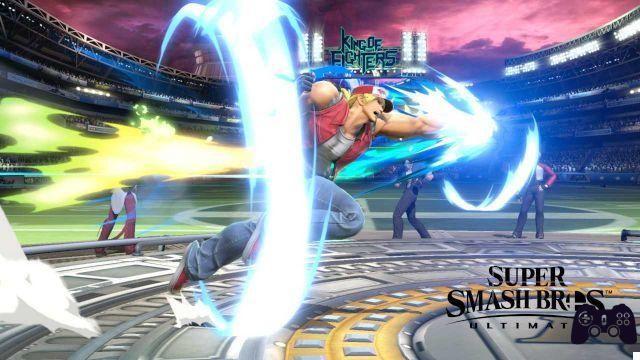
Terry - Super Smash Bros. Ultimate Character Guide
The third (and - so far - last) face of classic fighting games is Terry, which comes from Fatal Fury e The King of Fighters as a representative of SNK. The blond orphan brings with him an even more "real fighting" moveset than we have seen with Ryu and Ken, so we should move on.
- Availability: Terry is available with the scenario King of Fighters stadium (image) for six euros. If purchased in bulk in the Fighters Pass which also contains the Joker, the Hero, Banjo and Kazooie and finally Byleth, the total cost of 25 € allows you to save one euro for each fighter.
- Franchise of origin: Fatal Fury, The King of Fighters
- Origins: Terry Bogard is the "very American" protagonist of the fighting game Fatal Fury, as well as the "internal crossover" of SNK The King of Fighters. Made orphan from the Japanese criminal Geese Howard, Terry confronts him in a fight that (as the character trailer reminds us) leads Geese to fall on his back from the building. Although the outcome was canonically fatal, Geese saw himself in other episodes of the series, as well as in Tekken 7 as a guest character. For his part, Terry has appeared in many games, from the first real meeting with Ryu in Capcom vs. SNK to the title exclusively on Nintendo Switch SNK Heroines: Tag Team Frenzy.
- Gameplay: Where the hell do we start with Terry? The character, like Ryu and Ken, remains turned towards the opponent in all duos. Power Wave (B) launches a wave that travels through the ground when used on the ground, and counts as a weak air strike if used in mid-air (no alternate input). Terry doesn't have a “side special attack” (↔ + B), but the two: one forward and one backward. The one forward, Burning Knuckle (> + B), hurls Terry forward with a powerful straight (image, alternate input: ↓, ↓ +>,> + A / B). Crack Shoot (<+ B), invece, consiste in una capriola aerea all'indietro (ma che sposta comunque il personaggio in avanti) con il piede (input alternativo: ↓, ↓ + <, <+ A / B). Rising Tackle (↑ + B) is instead a whirling kick (“drill”) upwards, with limited horizontal range (alternative input: ↓ for 24 frames, then ↑ + A / B). Power Dunk (↓ + B) finally allows a vertical upward trajectory with a diagonal swoop forward in a way not unlike the Incineroar Crash (alternative input:>, ↓, ↓ +> + A / B).
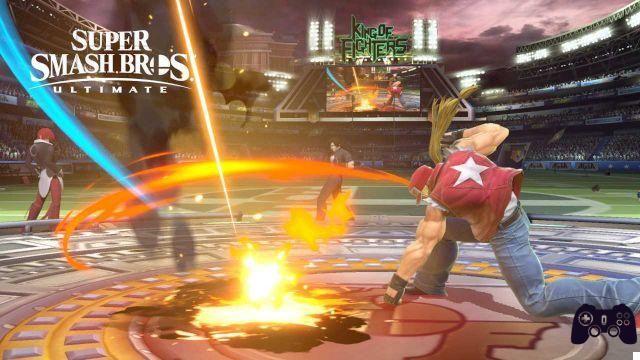
Concluding details, fifteenth episode: Terry and his very complicated commands!
For the first and hopefully only time, in our Super Smash Bros. Ultimate character guide we have to focus on one of them. Terry boasts an additional mechanic that is exclusive to him outside the manual inputs, namely the secret indicator "Go". After 100% damage taken (or below 30% life total left in an energy encounter), the appearance of the symbol next to the dammeter "grants" Terry two additional special moves. It "concedes" among many quotes, given the complicated inputs this requires. For less experienced players, it must be said, this involves more quarrels than anything else.
The inputs for the Power Geyser (image) are multiple: the sequence can be ↓, ↓ + <, <, ↓ + <,> and A / B or ↓, <, ↓,> and A / B. If desired, there is a simpler version with ↓, ↓ + <, <,> and A / B. The result sets off a small eruption in front of Terry. Buster Wolf you can instead hit with ↓, ↓ +>,>, ↓, ↓ +>,> and A / B or with the simpler ↓,>, ↓,> and A / B. Terry will hit the opponent in front of him with an explosion. Don't be fooled by the fact that we talked about "forward" (>) and "backward" (<): both moves can be done, in pure fighting tradition, only on the ground. If you want to see these moves in action, you can also find them in Terry's Final Smash, the Triple Wolf.
We give you our last (for now) date next time, with the remaining known - and released - characters so far: Byleth for the first Fighters Pass, and Min Min, Steve and Sephiroth for the second. That's all for today: how are you finding yourselves so far? (You can find the summary here.) Please let us know by leaving us a comment below, and don't forget to stay on Holygamerz to not miss any news from the videogame world and beyond.




